The Ceiling Paintings
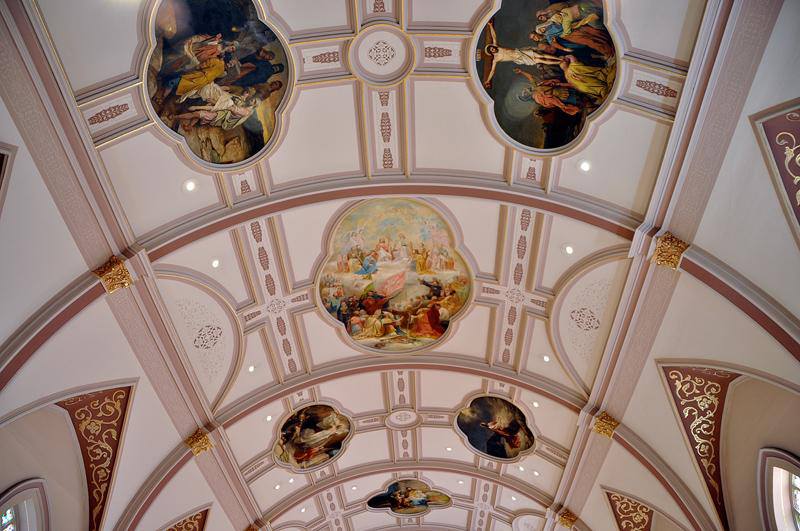
The first impression of the visitor, upon entering the nave of the church, is awe. The 48-foot barrel vaulted ceiling has no supporting pillars. In this cathedral setting one waits only for the sound of the organ to announce the presence of God.
All the ceiling paintings are on canvas. J. Vittur painted them in 1901, when he was employed by the DeCurtins Bros. Co. in Lima, Ohio. He was a “copyist painter” in that he was a part of the tradition of painters who composed new paintings by copying sections of masterpieces and blending various artistic styles.
The ceiling is divided into five panels by the five girders resting on elaborate pilasters.
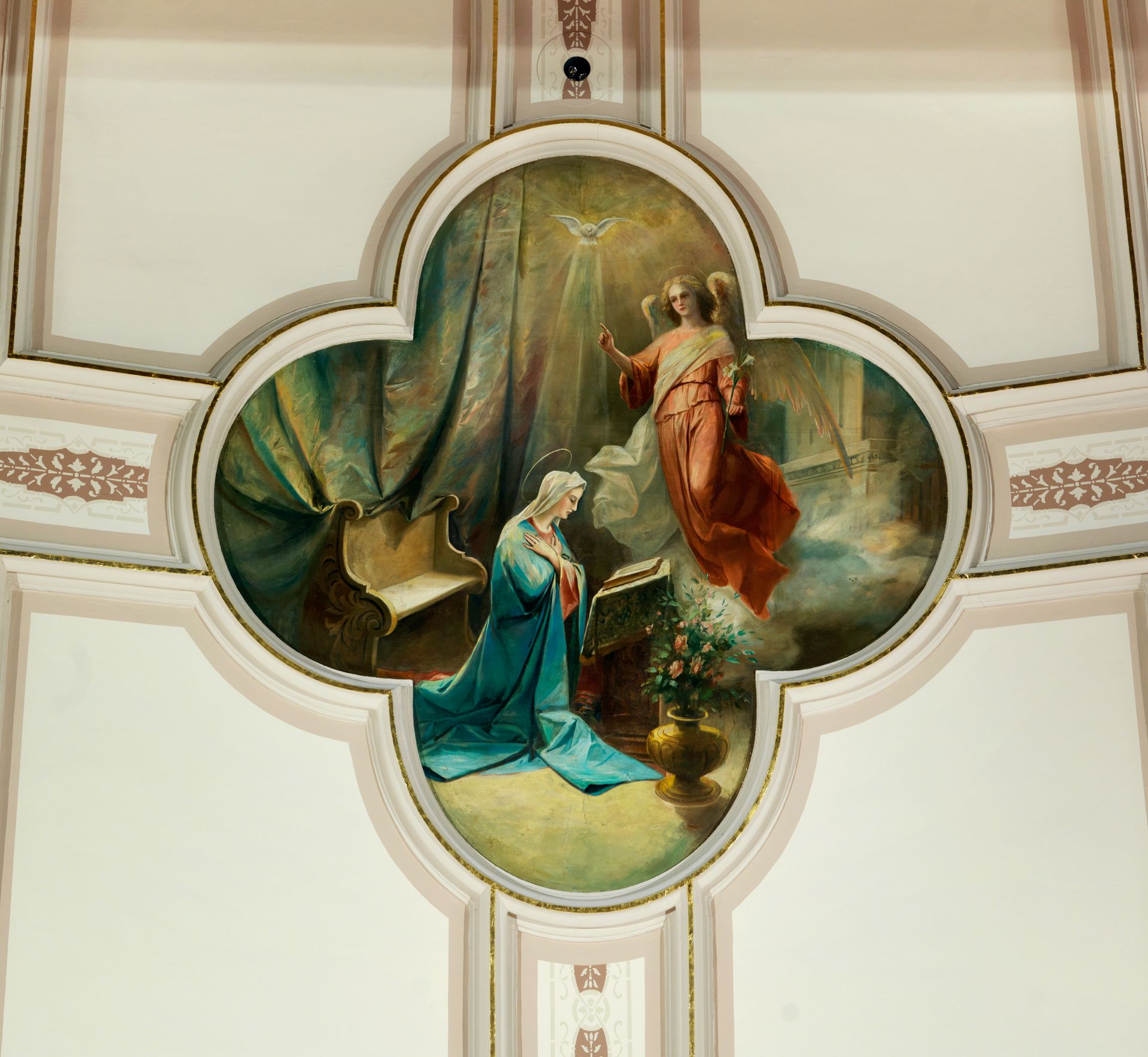
Above the choir loft is a painting of the Annunciation, in which Mary’s face radiates a calm spirit as she accepts her calling.
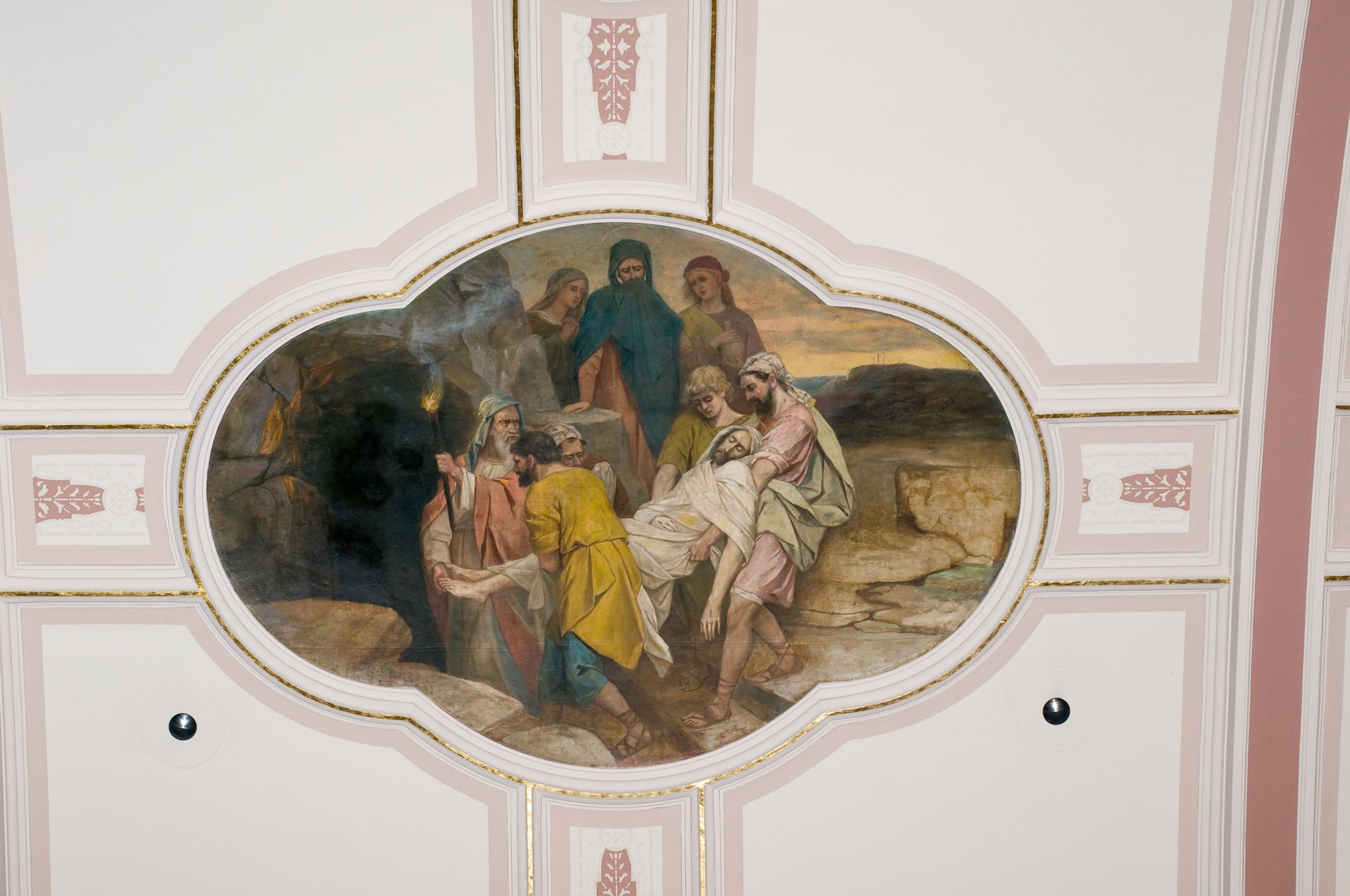
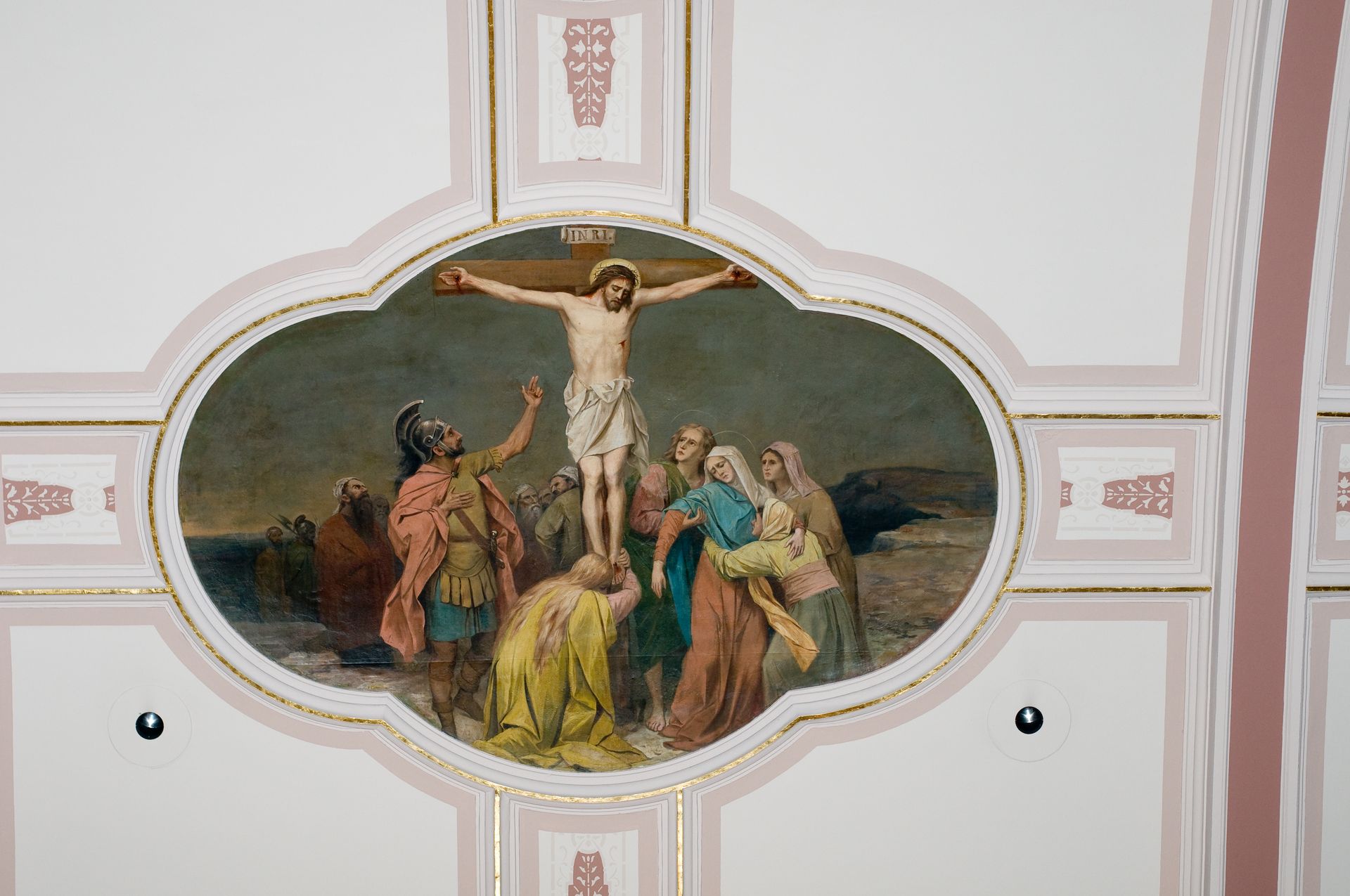
Christ being Borne to His Tomb and The Crucifixion are on the west side of the center painting.
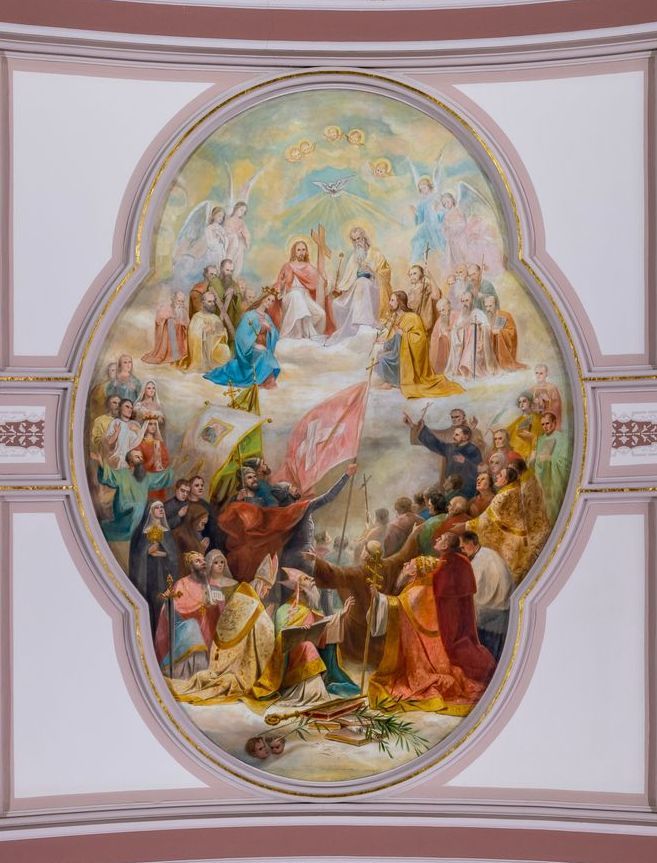
The central panel depicts the Glorification of the Holy Trinity and is twenty by fifteen feet. God the Father, Son and Holy Spirit are visible in the distance in all of their glory. St. Augustine can easily be seen kneeling below. Notable are the Renaissant influences of distorting perspective to create a monolithic scale and Raphael’s technique of layering thin coats of paint over colors of full value.
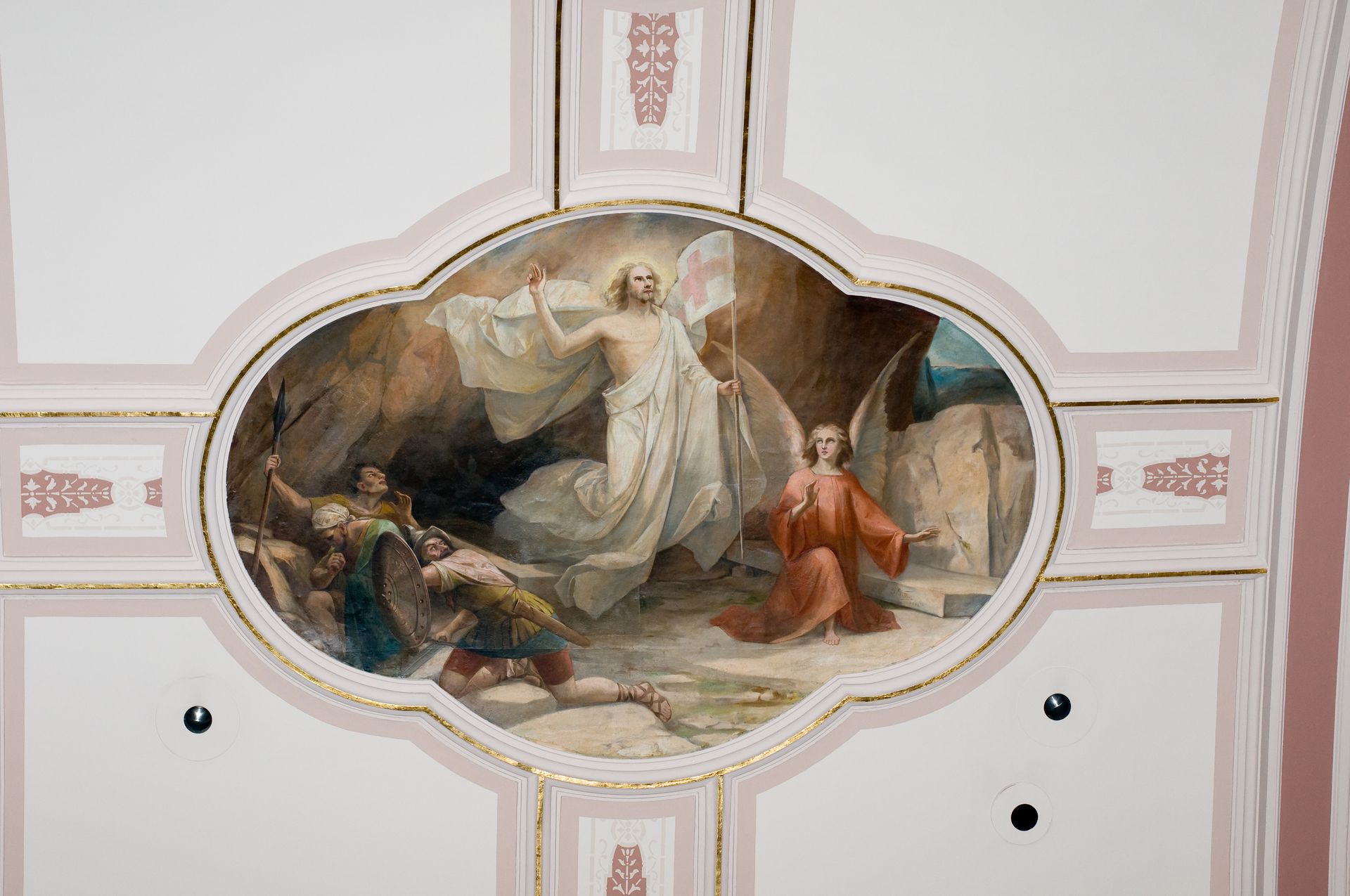
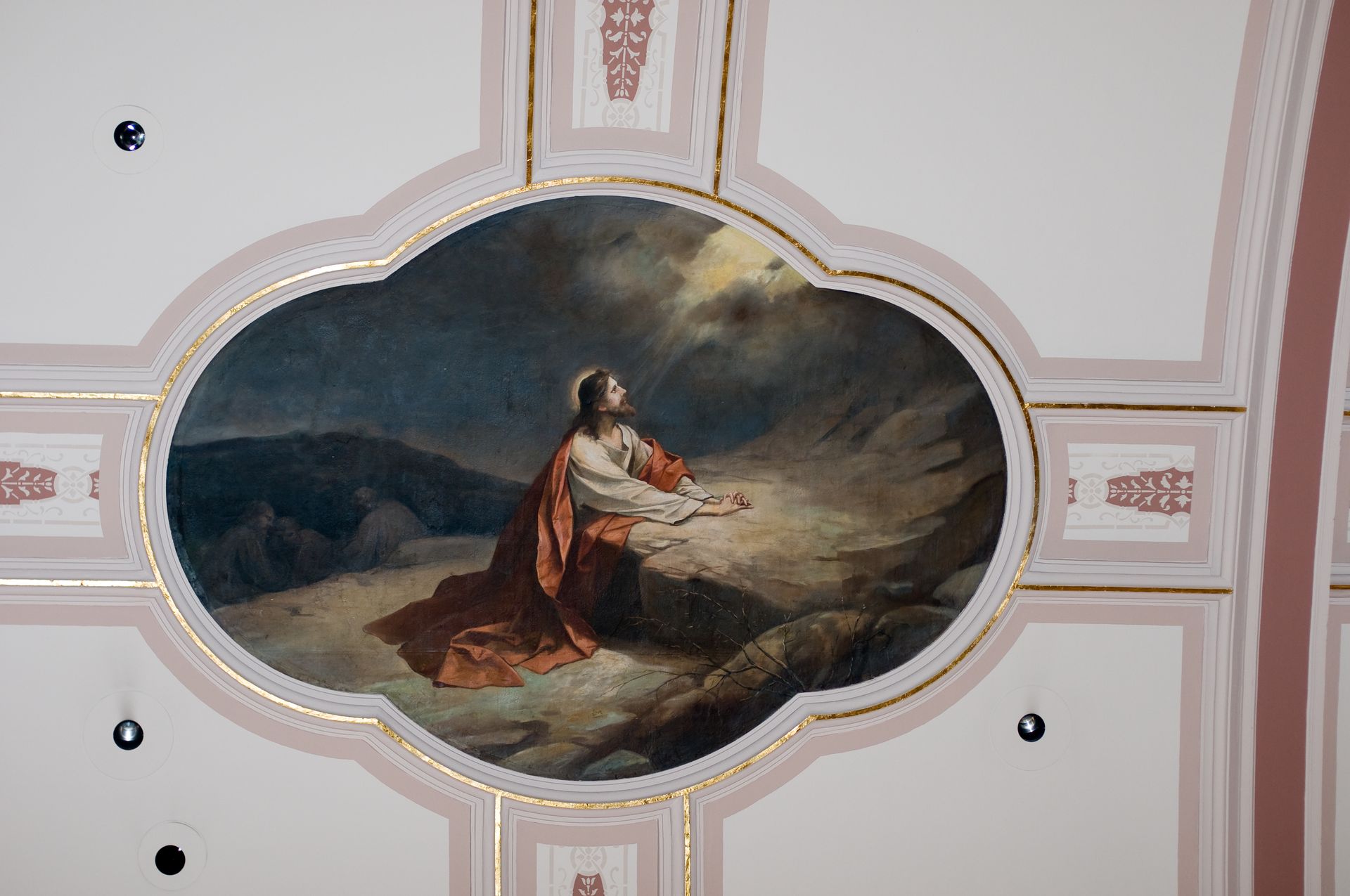
The Resurrection and Christ in His Agonies on the Mount of Olives are on the east side of the central panel. The lighting technique of such Dutch Masters as Rembrant and Van Dyck is evident in the light arising from behind the resurrected Jesus, who is the only source of light in the painting. As Jesus kneels at the Mount of Olives, there is a strong sense of atmospheric haze. The viewer is drawn into a land scape which extends indefinitely, a technique so common in the middle Renaissance. Leonardo Da Vinci used the haze effect so effectively in his “Madonna of the Rocks”.
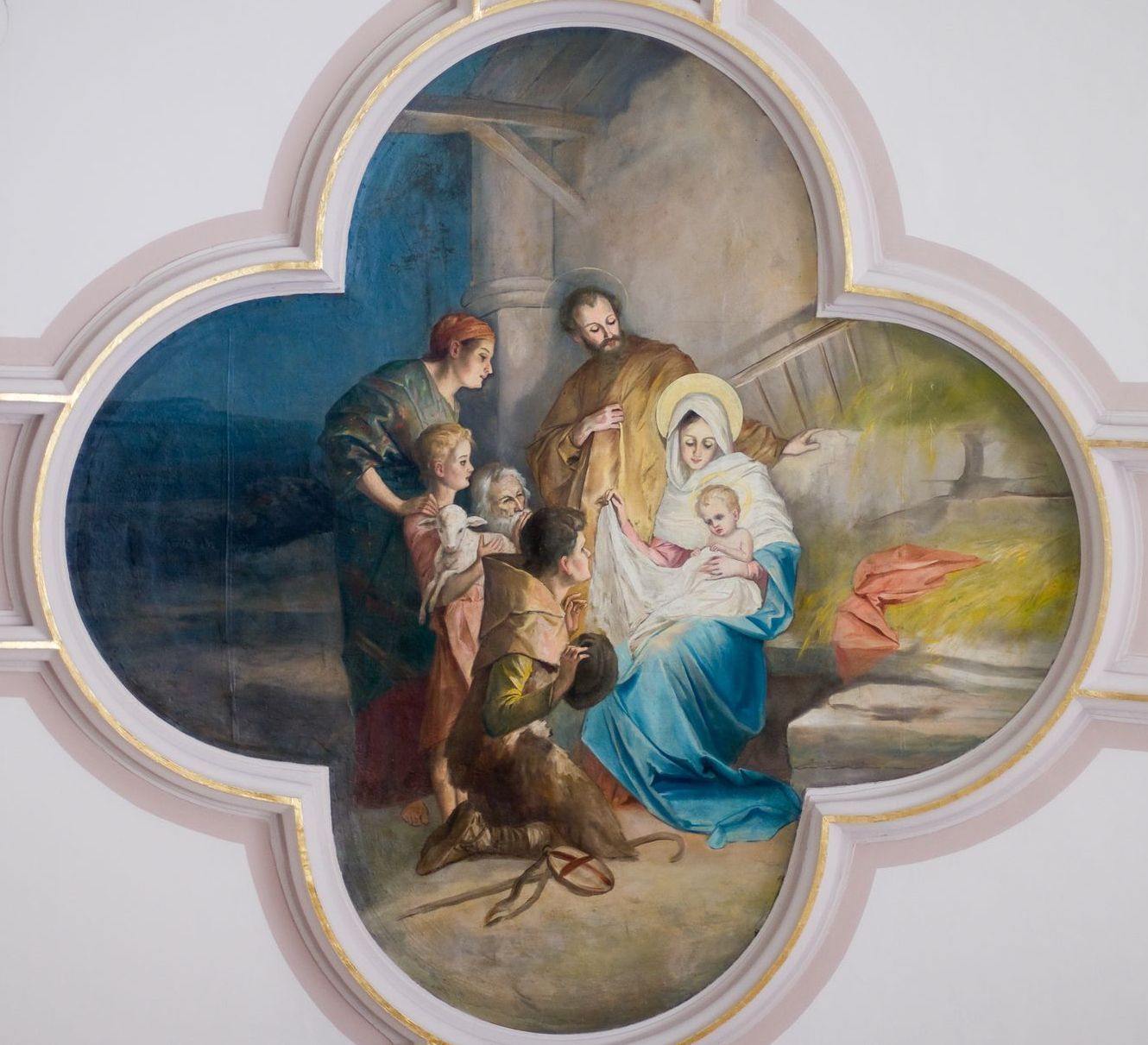
The final panel at the front of the church is the Nativity. The lighting of the painting is from the Dutch tradition; the figures are definitely Renaissance; and the linear halos are common to early Christian paintings.


